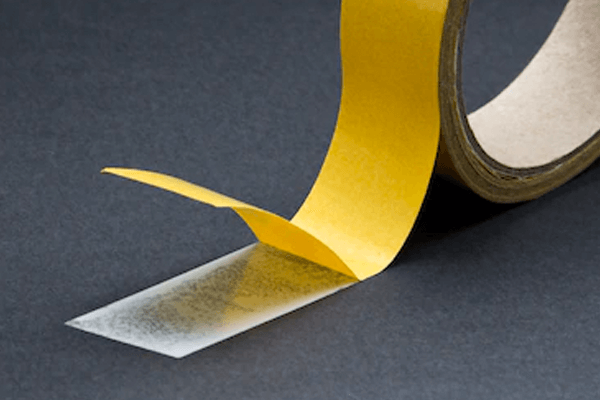Double sided tape is a true unsung hero in the world of DIY and crafting. From securing delicate pieces together to creating stunning displays, this versatile adhesive can transform your projects with ease. Whether you’re a seasoned crafter or just starting out, mastering the art of double sided tape can elevate your home decor and craft creations to new heights. With countless types available, choosing the right one for your needs might feel overwhelming. But fear not! This guide will unravel its mysteries and show you how to get the most out of double sided tape in both home projects and crafts alike. Let’s dive into everything you need to know about using this handy tool effectively!
Types of Double Sided Tape and Their Uses
Double sided tape comes in various types, each designed for specific tasks. The most common is the general-purpose double sided tape. This is perfect for everyday projects like mounting pictures or securing lightweight decorations.
Then there’s heavy-duty double sided tape, which offers stronger adhesion. It’s ideal for more substantial items and can handle outdoor applications too.
For those crafting enthusiasts, foam double sided tape adds a dimension of cushioning. It’s great for 3D projects or creating raised effects on cards and scrapbooks.
If you’re looking to work with fabric, fabric-specific double sided tape provides a reliable bond without sewing. It’s excellent for hemming and other textile applications.
Removable double sided tape allows you to reposition items easily without damaging surfaces. This type is a must-have when it comes to temporary displays or experiments in layout design.
Tips for Choosing the Right Double Sided Tape
Choosing the right double sided tape can make all the difference in your projects. Start by considering your specific needs. Are you working on a delicate craft or a heavy-duty home repair?
For lightweight tasks, opt for thinner tapes with less adhesive strength. These are perfect for paper crafts and photo mounting without causing damage.
If you need something more robust, look for industrial-strength options. They excel at holding heavier materials together, making them ideal for furniture assembly or securing carpets.
Don’t forget to check the surface compatibility! Some tapes work better on smooth surfaces while others adhere well to rough textures.
Pay attention to temperature resistance if you’re using it outdoors or in areas prone to moisture. A tape that withstands extreme conditions will ensure lasting results without peeling away over time.
Preparing Surfaces for Double Sided Tape Application
Before applying double sided tape, surface preparation is key. A clean surface ensures a strong bond.
Start by dusting off any loose particles. Use a dry cloth or soft brush to remove debris. This simple step can make a big difference.
Next, wipe the area with rubbing alcohol or soapy water to eliminate grease and grime. Allow it to dry completely before proceeding. Moisture can weaken adhesion.
For textured surfaces, consider using a stronger adhesive option if necessary. Double sided tape works best on smooth areas for maximum effectiveness.
Ensure that the temperature of your environment is optimal—ideally around room temperature—to enhance stickiness and durability when you apply your tape. Taking these steps will help achieve better results in your projects.
Creative Uses for Double Sided Tape in Home Projects
Double sided tape is a hidden gem in home improvement. It’s not just for craft projects; it can elevate your everyday tasks.
Need to secure loose rugs? A strip of double sided tape on the underside keeps them in place, reducing slips and trips.
For those pesky wall decorations that never hang straight, this tape offers an easy solution. Just apply it to the back of picture frames or art pieces for a clean look without nails.
If you’re looking to create custom coasters, stick fabric or cork onto tiles using double sided tape for quick and stylish results. This method allows full creativity while ensuring functionality.
Additionally, use it to organize cables around your workspace. Simply attach cords along desks or walls, keeping clutter at bay without visible hardware.
These simple applications show how versatile double sided tape can be when tackling various home challenges creatively.
How to Use Double Sided Tape in Craft Projects
Double sided tape is a crafter’s best friend. It offers a clean and simple way to bond materials without the mess of glue.
Start by cutting your tape into smaller strips for precise application. This works especially well with paper crafts, ensuring that your edges stay neat and tidy.
For fabric projects, opt for stronger double sided tape designed specifically for textiles. It can hold pieces together securely while you sew or embellish.
Consider using it to layer different elements in scrapbook pages or card-making. The invisible nature of the tape keeps the focus on your creative designs rather than adhesive lines.
Don’t forget about three-dimensional crafts! Double sided tape can help attach embellishments like ribbons, buttons, or felt shapes easily—adding depth without bulkiness.
Get creative and experiment with various textures; you’ll be amazed at what this versatile tool can achieve in your craft space!
Common Mistakes When Using Double Sided Tape and How to Avoid Them
Many people underestimate the importance of surface preparation. Applying double sided tape on dusty or greasy surfaces can lead to poor adhesion. Always clean and dry the area before sticking.
Another common mistake is not measuring accurately. If you cut the tape too short, it may not hold as intended. Take your time to measure twice for a perfect fit.
Using excessive force when pressing down can also backfire. Gentle pressure works best, ensuring even contact without damaging delicate materials.
Don’t rush the application process. Allowing some time for proper bonding increases durability and effectiveness. Patience pays off with this versatile tool!
Removing and Reusing Double Sided Tape
Removing double sided tape can be a bit tricky, but with the right approach, it can be done effectively. First, gently peel back one corner of the tape using your fingernail or a plastic scraper. Be cautious not to damage the surface underneath.
If you find that some adhesive is left behind after removal, rubbing alcohol or an adhesive remover can help clean up any residue. Always test on a small area first to ensure it doesn’t affect your surface.
As for reusing double sided tape, this largely depends on its condition and type. If it’s still sticky and intact after removing it from one project, you might find new ways to use it elsewhere. Just remember that over time, tapes lose their stickiness due to dust and wear.
By keeping these tips in mind regarding removal and potential reuse of double sided tape, you’ll extend its life while also making your projects more efficient. It’s all about getting creative with what you’ve got!


